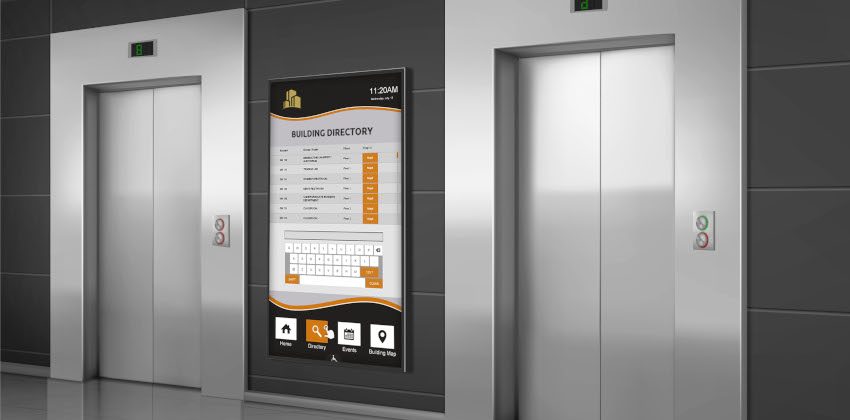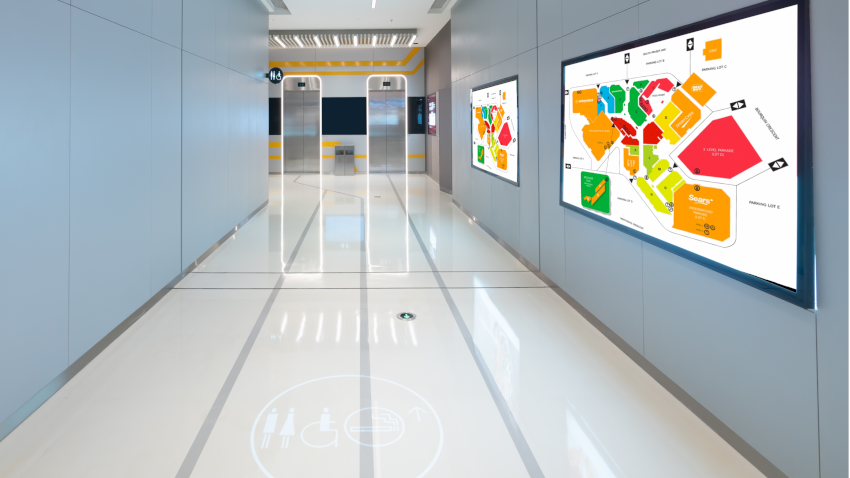A-Z of Digital Signage: Here’s What You Should Know
Digital signage technology is now more critical than ever, impacting the business world significantly. It’s a powerful tool for grabbing attention, communicating, educating, and boosting sales from customers. Statistics show that 80% of brands that use digital signage solutions notice a 33% increase in sales.

Besides, 52% of marketers have reported that signage gives them strategic focus in enabling them to gain profit. So, if your business isn’t already exploring digital signage in various forms, you’re missing out on its multifaceted benefits. It’s high time to rethink your marketing strategy.
You’re only limited by your imagination as far as technology is concerned. Endless possibilities exist for how to apply signage to your space. One way to think of digital signage is as an interconnection between your business’ physical and digital worlds. A digital footprint adds to a brick-and-mortar store’s convenience and tactile experience.
A-Z of Everything You Need to Know
Despite the importance of digital signage solutions, being new to the field can be highly intimidating. For example, you must figure out how to leverage this technology to capitalize on your business’s strengths. At the same time, you must know the basic terms of digital signage and understand what they mean. That can be overwhelming, making you feel like a signage dummy.
All the same, it’s crucial to understand the keywords in digital signage. Doing so can make it easier to master the concept and technology. This piece is your guide to gaining a general understanding of the digital signage world. It comprises basic terminology you’ll encounter in your interaction with cloud-based digital signage platforms and providers. In a nutshell, consider this piece the A to Z of digital signage.
A is for Advertising: Advertising is marketing communication displayed on screens using digital signage content. In short, use this communication form to uniquely and creatively promote your products or services.
B is for Beacons: These small hardware devices connect to phones via Bluetooth and transmit personalized in-store messages to users. Further, beacons are low-energy and battery-friendly.
C is for the Content Management System (CMS): A content management system is used to customize, schedule, monitor, and deploy different kinds of content. Contact a digital signage software provider to learn more about how their functionalities can captivate your audience.
D is for Display: It refers to an output device used to present information, including, but not limited to, LED, LCD, Touchscreens, Plasma, Kiosks, and ATM Toppers.
E is for Entertainment: You can use signage to offer pleasure-inducing content to capture an audience’s attention. Offer funny or attention-grabbing content as they wait to access your products or services. For instance, the Arizona Department of Transportation (ADOT) is renowned for its witty messages to Phoenix and Scottsdale residents.
F is for FIDS: Flight Information Displays (FIDS) are found in and around airport terminals. They are the heart of any airport’s operation and display flight information in real time to passengers.
G is for Graphics: refers to the visual image, artwork, or design created to pass on a message.
H is for Hardware: The lifeblood of signage; refers to the physical components. These include displays, media players, menu boards, beacons, computers, and network cables.

I is for Interactive: Interactive signage turns viewers into users. Instead of simply displaying general messages on message boards, let digital signage respond to users’ input.
J is for JPEG: This photo file format is among the most popular in digital signage. When you have large format files, converting them to JPEG makes it easier to play on media players.
K is for Kiosks: Also known as digital totems, these are free-standing hardware with a digital sign at the top. You can include touchscreen integration for interactivity.
L is for Lettering: Not all types of lettering or fonts look good on digital displays. Fonts such as Trajan, Futura, Optima, and Franklin Gothic look better on digital screens than other font types.
M is for Media Player: The device plays digital signage content on digital displays. Best select a media player that supports multiple file formats.
N is for Network: It refers to a group of digital screens connected to a single media player. For example, retailers with several stores can use a single source and a network to air promotions in different locations.
O is for Operating System: Android and Windows are the two most popular operating systems. Android is a cost-effective option because it is free to operate.
P is for Playlist: Like a music playlist, you can create a digital signage content playlist and then deploy it at scheduled times. It works well in restaurants with different menu boards for breakfast, lunch, and dinner.
Q is for Quick Response (QR) code: This is a barcode embedded with data that you can scan to gather information.
R is for Real-Time: It’s a means of providing the latest information. You would typically use Real-time playback to show live traffic or display notifications on a flight information display system.
S is for Streaming: Digital signage lets you live-stream news content, events, or social media feeds.
T is for Touch Screen: These screens react to your touch, working as interactive billboards and creating a high-impact experience for audiences. You can engage users by including touch screen kiosks around your space.
U is for User-Friendly: Digital signage software is user-friendly and easy to set up. You don’t need special skills to operate digital signage software and turn any screen into an electronic sign.
V is for Video Walls: It’s a collection of displays interconnected to operate as one large screen. Video walls are perfect for displaying engaging content in large spaces, considering their colossal size.

W is for Wayfinding Signage: Refers to using digital signs to help guests find their way around a place. Strategically place wayfinding digital signage solutions in airports, campuses, office buildings, shopping centers, parking lots, and healthcare facilities.
X is for Xvid: It’s a type of media file format. Although some digital signage software can play Xvid media, others require you to convert the files into a more media player-friendly format.
Y is for YouTube: Digital signage software allows you to integrate YouTube videos into digital signage networks seamlessly.
Z is for Zoning: Zoning happens when a single digital signage display is split into several sections, each showing different kinds of content. For example, one part of the screen could show weather updates while another runs a news feed.
A–Z of Digital Signage: Understanding What Digital Signage Is
The terms mentioned above form the entire body of digital signage. Items such as displays, touch screens, kiosks, and graphics become immediately apparent whenever you interact with smart digital signage. Others, like networks, file formats, and beacons, work in the background but are equally important.
Businesses are markedly experimenting with signage marketing in ways that exceed the tried and tested methods and strategies. At such a significant time in the world of technology, your business shouldn’t miss out. So, consider studying the fundamentals of digital signage and enjoy the journey that starts by understanding the basic terms. You don’t have to learn everything at a go, but it’s crucial that you keep learning and expanding your knowledge.


